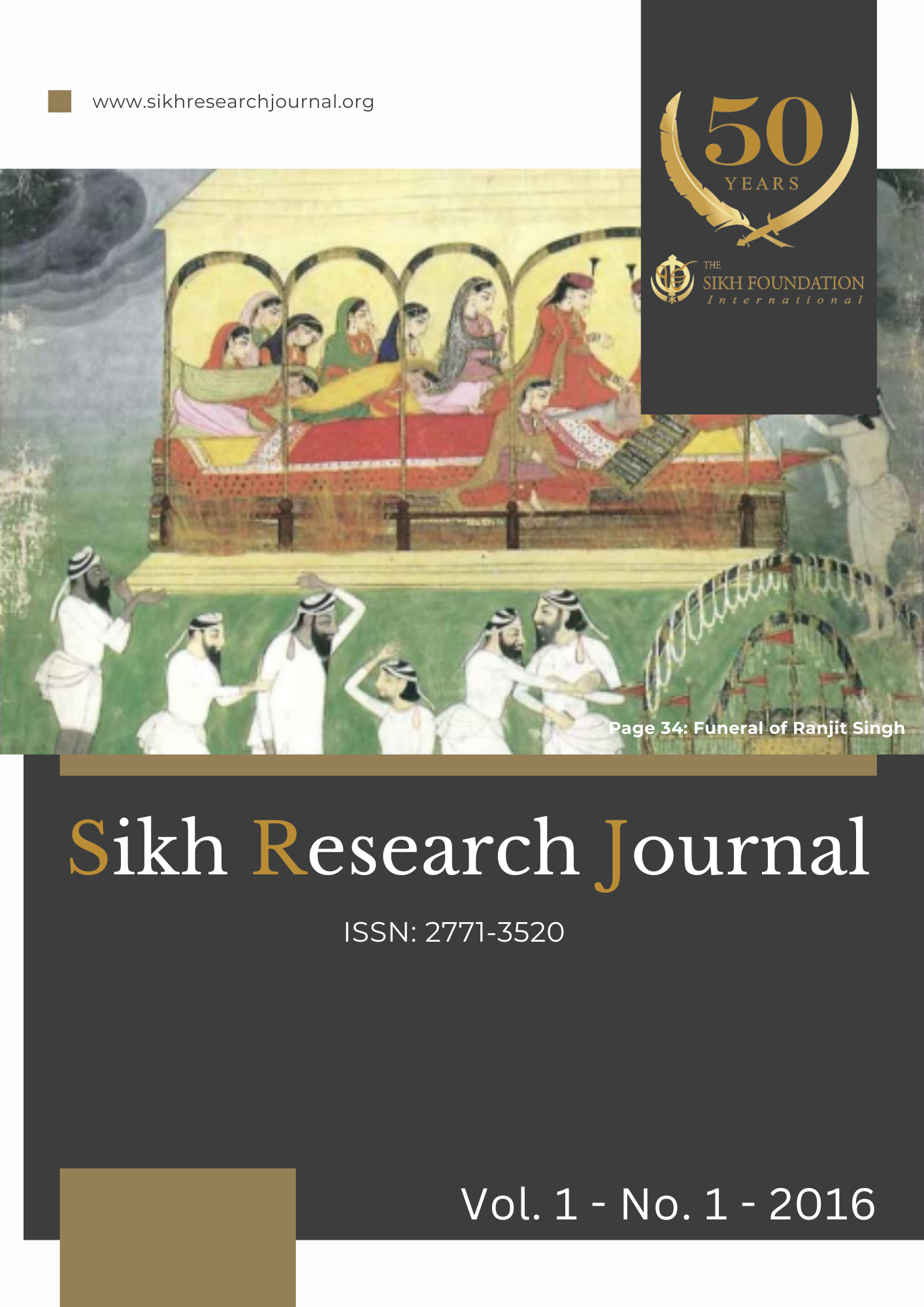Abstract
Maharaja Ranjit Singh's Samadhi in Lahore is the funerary monument built by his successors after his death. in 1839. All nineteenth century and later historians writing on Lahore and its historical monuments mention the Samadhi but none of them refer to the death rituals that took place on that spot before the building was commenced. An examination of these gives an insight into numerous nineteenth century social and religious practices of the Sikhs that have since been largely abandoned. These events were recorded in detail by the court chronicler Sohan Lal Suri in Umdat-ut Tawarikh, were reported by the newsletters called the Punjab Akhbar and the Lahore Akhbar, and have been discussed in accounts by foreigners who were either present at the funeral or communicated details to each other in letters and reports. Based on contemporary texts and a few paintings on this subject, this paper attempts to narrate the last moments of the Maharaj a, the final respects and stately farewell accorded to him not only by his successors and his people but also by the British army while the caravan accompanying the ashes travelled to Hardwar en route Hindustan (the name given to British occupied India). The symbolic presence of the ashes in the Samadhi and their removal in recent times is also discussed briefly.References
N/A

This work is licensed under a Creative Commons Attribution-NonCommercial-ShareAlike 4.0 International License.
Copyright (c) 2025 Nadhra S. N. Khan

